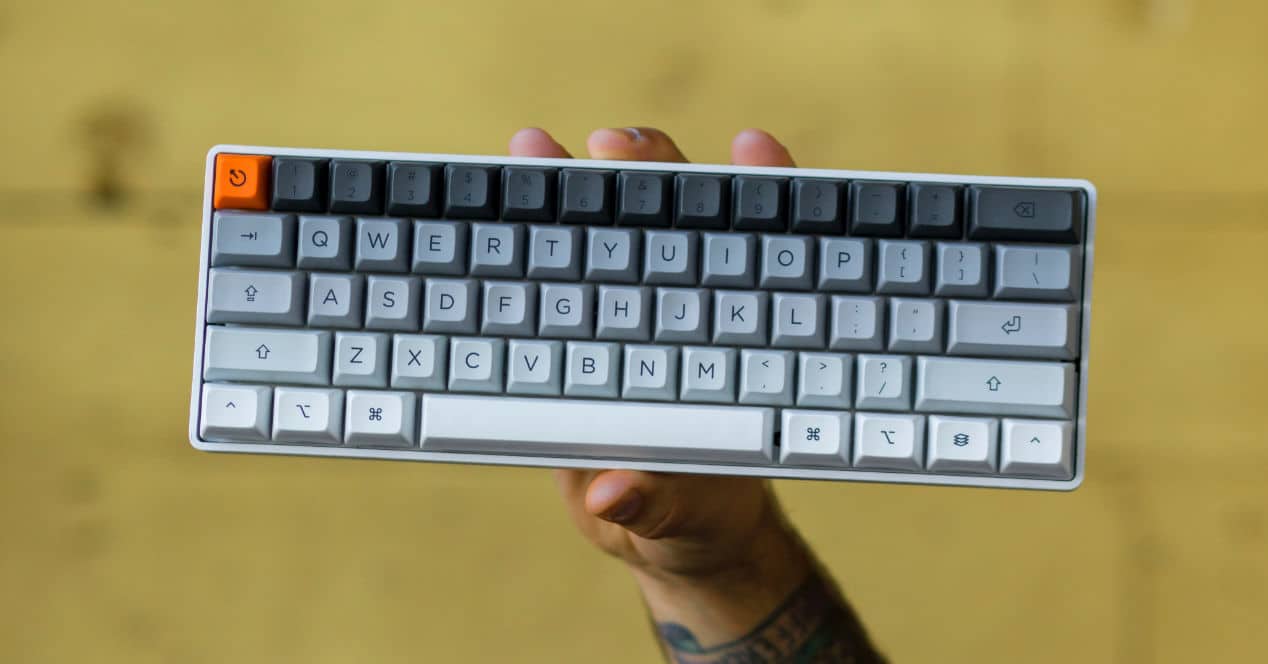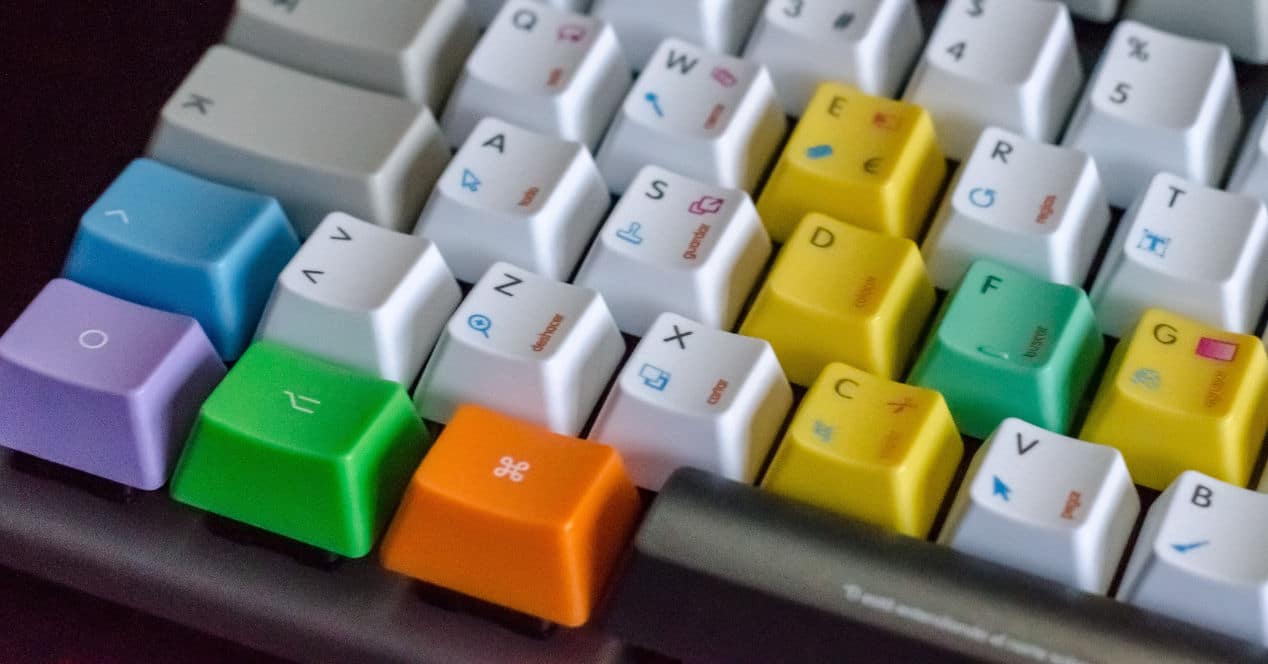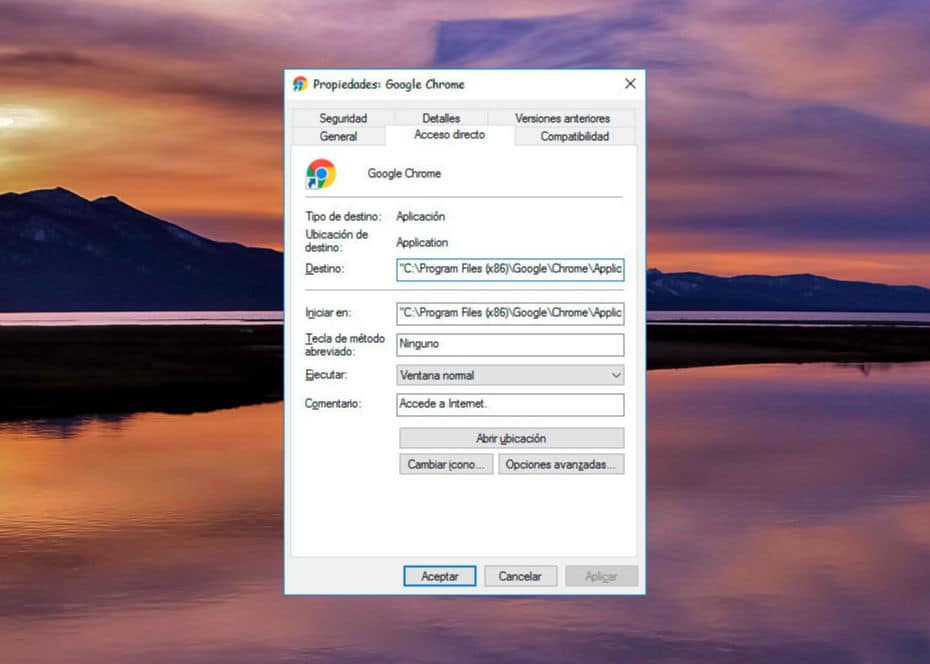
If you want to work more efficiently, quickly and comfortably with your computer, learn about the different keyboard shortcuts It's fundamental. In Windows 10 there are very common shortcuts that are known to everyone, but there are other less popular ones that you should also know about.
The Windows key and associated shortcuts

The use of Windows key for many users it is limited to pressing and seeing how the Start menu opens or closes, but its functions are extended if we combine it with other keys. Memorizing these combinations at once is not an easy task, but with practice and a few simple tips you will see how your user experience improves.
For remember all keyboard shortcuts of each operating system, the ideal is to assimilate them little by little. Start with a small group and add others as you memorize them. If you want, you can help by printing a sheet or placing small post-its on the screen with the ones that interest you the most. So you can quickly consult them the first few times. The more you use them, the more easily you will memorize them. And the time will come when your fingers will go to the appropriate key combination on their own.
All keyboard shortcuts with the Windows key:
- Windows key: Open or close Home.
- Windows key + A: Open Action Center.
- Windows key + B: Bring focus to the notification area.
- Windows key + C: Open Cortana in listening mode. This access is disabled by default. To turn it on, select Start > Settings > Cortana and turn on the toggle for Let Cortana listen to my commands when I press the Windows Key+ C.
- Windows Key + Shift + C: Open the charms menu.
- Windows key + D: Show and hide the desktop.
- Windows key + Alt + D: Show and hide the date and time on the desktop.
- Windows key + E: Open File Explorer.
- Windows key + F: Open the Feedback Hub and take a screenshot.
- Windows key + G: Open the game bar with a game open.
- Windows key + H: Start dictation.
- Windows key + I: Open Settings.
- Windows key + J: Focus on a Windows suggestion when one is available.
- Windows key + K: Open the Connect quick action.
- Windows key + L: Lock the device or switch accounts.
- Windows key + M: Minimize all windows.
- Windows key + O: Lock device orientation.
- Windows key + P: Choose a display mode.
- Windows key + Ctrl + Q: Open Quick Assistance.
- Windows key + R: Open the Run dialog
- Windows key + S: Open the search.
- Windows Key + Shift + S: Take a screenshot of part of the screen.
- Windows key + T: Scroll through the applications on the taskbar.
- Windows key + U: Open the Ease of Access Center.
- Windows key + V: Open the Clipboard. To enable this shortcut, select Start > Settings > System > Clipboard and turn on the toggle button below Clipboard history.
- Windows Key + Shift + V: Scroll through notifications.
- Windows key + X: Open the Quick Link menu.
- Windows key + Y: Switch input between Windows Mixed Reality and the desktop.
- Windows key + Z: Show the commands available in an application in full screen mode.
- Windows key + period (.) or semicolon (;): Open the emoji panel.
- Windows key + comma (,): Temporarily browse the desktop.
- Windows key + Pause: Display the System Properties dialog
- Windows key + Ctrl + F: Search for equipment (on a network).
- Windows Key + Shift + M: Restore minimized windows to the desktop.
- Windows key + number: Open the desktop and start the application pinned to the taskbar in the position indicated by the number. If the app is already running, switch to that app.
- Windows key + Shift + number: Open the desktop and start a new instance of the application pinned to the taskbar in the position indicated by the number.
- Windows key + Ctrl + number: Open the desktop and switch to the last active window of the application pinned to the taskbar in the position indicated by the number.
- Windows key + Alt + number: Open the desktop and open the list of application shortcuts pinned to the taskbar in the position indicated by the number.
- Windows key + Ctrl + Shift + number: Open the desktop and open a new instance of the application located in the given position on the taskbar as administrator.
- Windows key + Tab: Open Task View.
- Windows Key + Up Arrow: Maximize the window.
- Windows Key + Down Arrow: Remove the current application from the screen or minimize the desktop window.
- Windows Key + Left Arrow: Maximize the application or desktop window to the left side of the screen.
- Windows Key + Right Arrow: Maximize the application or desktop window to the right side of the screen.
- Windows key + Start: Minimize everything except the active desktop window (repeat the action to restore all windows).
- Windows Key + Shift + Up Arrow: Expand the desktop window to the top and bottom of the screen.
- Windows Key + Shift + Down Arrow: Restore/minimize active desktop windows vertically while preserving width.
- Windows Key + Shift + Left or Right Arrow: Move an application or desktop window from one monitor to another.
- Windows key + Spacebar: Switch between input language and keyboard layout.
- Windows Key + Ctrl + Spacebar: Switch to a previously selected input.
- Windows key + Ctrl + Enter: Activate Narrator.
- Windows key + Plus (+): Open the Magnifying Glass.
- Windows key + forward slash (/): Start IME reconversion.
- Windows key + Ctrl + V: Open animated notifications.
- Windows key + PrtScr: Take a screenshot and send it directly to the images folder.
- Windows key + G: Launches the DVR application to record the screen.
- Windows Key + Alt + G: Start the screen recording in the window you are in.
- Windows key + Alt + R: Switch between secondary screen mode if you have another monitor connected.

If you write frequently there are other shortcuts that are also very useful for copying and pasting, selecting sentences or entire paragraphs more quickly, etc. They are the following:
- Ctrl + V or Shift + Insert key: Pastes a text in the position where the cursor is.
- Ctrl + C or Ctrl + Insert key: Copies the selected text to the clipboard.
- Ctrl + X key: Cuts the selected text to the clipboard.
- Ctrl + A key: Selects all the text on the page.
- Ctrl+F key: Opens a box to search the page for the text you type in it.
- shift + arrow keys: Moves the cursor around the text by selecting it. You can combine pulsations up or down, left or right to select everything you want.
- Shift + Home or End: Moves the cursor to the top or bottom of the page and selects all the text it passes over.
- Shift key + UpPag or AvPag: Moves the cursor to the top or bottom of the visible screen by selecting the text.
- Ctrl + Shift + Home or End key: Moves the cursor to the top or bottom of the text by selecting it in turn.

Finally, you can also assign a key combination to launch applications. You just have to go to the application icon, secondary click and in the Shortcut tab look for: Alternative shortcut key. Enter the key combination you want there and you can open it without using the mouse.
Keyboard shortcuts, a question of productivity
As you can see, the shortcuts related to the Windows key are many. Select the ones that a priori might interest you the most based on how you use the system and interact with it. The Windows key + arrow keys are especially useful if you work with many windows open.
If you want to know each and every one of the keyboard shortcuts available for the different versions of Windows, in the Microsoft website you will find them perfectly organized.
How useful these shortcuts helped me a lot, thank you very much
It's nice to know that there are free information aids that can help anyone in the world, without necessarily having to know the person who needs it, without selecting who and who not. Since the poor cannot access this knowledge if it is not offered to them free of charge,
Helping others without profit is a gift that we must recognize and appreciate.
Governments must recognize the company that provides such aid, thanking it and helping what it needs to carry out its mission in the best and most efficient way possible.
On the part of the company, it must feel proud to know the good that it is providing to humanity, for the good of all, and knowing that it is non-profit. "Which we lack today."